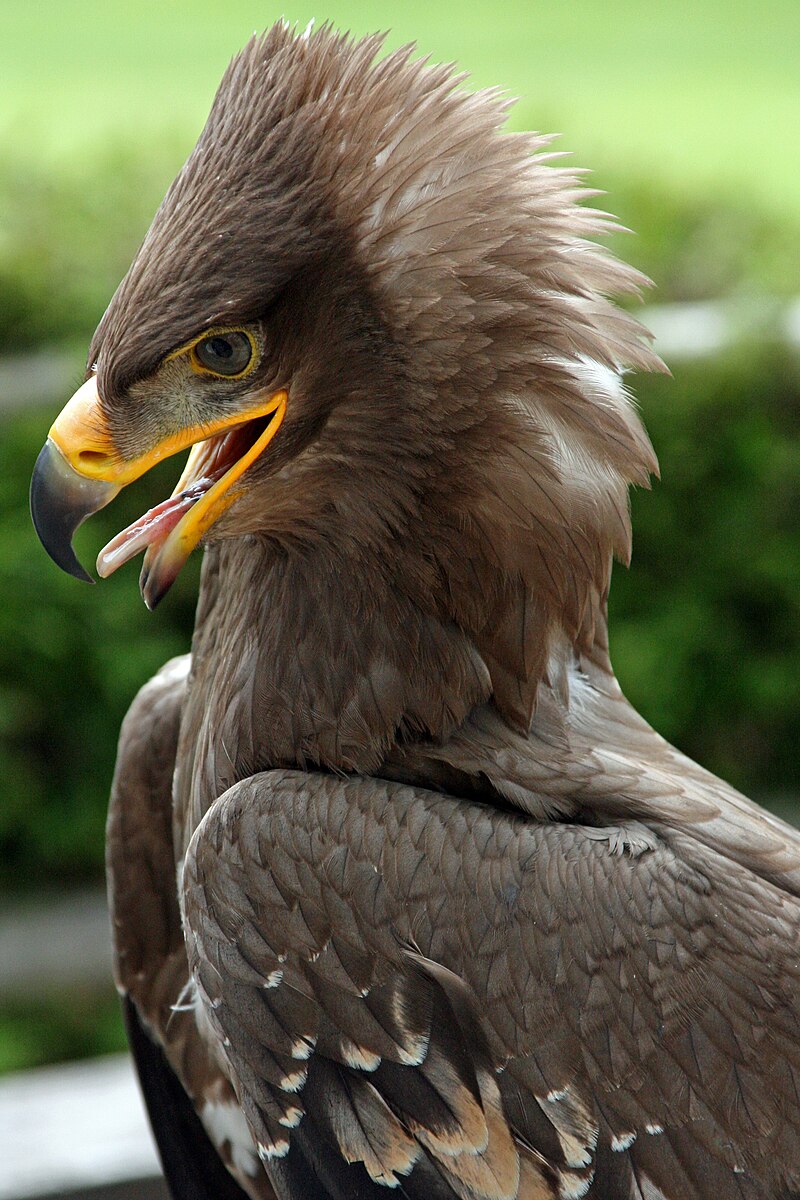Steppe eagles (Aquila nipalensis) are large birds of prey known for their distinctive feathers. These birds are members of the subfamily Aquilinae, also known as the “booted eagles,” which is illustrated by their well-feathered legs. The feathers of steppe eagles are an essential aspect of their appearance and behavior, and they vary significantly between different age groups and individuals.
Juvenile Steppe Eagle Feathers
Juvenile steppe eagles have brown to grey-brown upperparts, with a rufous-buff nape patch that is more pronounced in eastern populations. They also have broadly white-tipped black feathers on their greater coverts, wings, and tail, as well as a bold but narrow cream band on their brown medians. The underparts of juvenile steppe eagles are generally the same as the upperparts but may be somewhat paler.
Immature Steppe Eagle Feathers
 Image source: Steppe Eagle by Fimb
Image source: Steppe Eagle by Fimb
By their second year, the plumage of immature steppe eagles is still similar to that of juveniles, but they may show signs of wear on the pale tips of their secondaries, median coverts, and tail feathers. By the end of their second winter, immature steppe eagles may have nearly lost all of their pale tips, giving them a more worn appearance.
Distinctive Flight Patterns and Feather Characteristics
Steppe eagles have a distinctive flight pattern, with long, broad wings that tend to be held almost parallel-edged and square-ended. They have seven elongated emarginations on their wings, which give them a distinctive appearance in flight. The upperwings of steppe eagles often show a pale greyish primary patch, which is especially noticeable on non-adults. The underwings of these birds may have a small carpal crescent, which can vary in visibility. The tail of the steppe eagle is broad and rounded, measuring about 3/4 of the length of the wing-base. The wingspan of these birds is about 2.6 times greater than their total body length.
Cultural Significance of Steppe Eagle Feathers
Steppe eagle feathers are highly valued in many cultures, including that of the Native American Heritage Forum (NAHF) at the U.S. Military Academy. In 2023, the NAHF gifted eagle feathers to four former cadets from the USMA Class of as they began their Army venture, symbolizing strength, courage, wisdom, honor, and warrior spirit. The feathers used in the ceremony were cleaned, prepared, and beaded by Francisco Bailon, a respected elder and beading artist from the Diné (Navajo) Nation, and hand-delivered by his sons, both Marine Corps veterans. Retired Command Sgt. Maj. Ron Cook Jr., a former paratrooper in the 82nd Airborne Division and a member of the Seneca Nation, helped explain the importance of how each feather should be received and held during the ceremony.
In Native American culture, eagle feathers are often used in ceremonies and rituals, and are believed to carry powerful spiritual energy. The eagle is considered a symbol of strength, courage, and freedom, and eagle feathers are often given as gifts to honor and recognize significant achievements. The feathers are also used in traditional dance and music, and are often displayed in homes and other sacred spaces.
Conclusion
Steppe eagle feathers are a critical aspect of these birds’ appearance and behavior, and are highly valued in many cultures for their symbolic and spiritual significance. Understanding the unique features and characteristics of steppe eagle feathers can help us appreciate the beauty and complexity of these magnificent birds, and deepen our connection to the natural world.
References:
– Wikipedia: Steppe eagle
– Feather Base: Steppe eagle feather specimen
– U.S. Army: West Point honors Native American heritage in second-ever eagle feather ceremony
– YouTube: Steppe eagle flight

